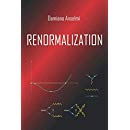I discuss the properties of the central charges $c$ and $a$ for higher-derivative and higher-spin theories (spin 2 included). Ordinary gravity does not admit a straightforward identification of c and a in the trace anomaly, because it is not conformal. On the other hand, higher-derivative theories can be conformal, but have negative $c$ and $a$. A third possibility is to consider higher-spin conformal field theories. They are not unitary, but have a variety of interesting properties. Bosonic conformal tensors have a positive-definite action, equal to the square of a field strength, and a higher-derivative gauge invariance. There exists a conserved spin-2 current (not the canonical stress tensor) defining positive central charges $c$ and $a$. I calculate the values of $c$ and $a$ and study the operator-product structure. Higher-spin conformal spinors have no gauge invariance, admit a standard definition of $c$ and $a$ and can be coupled to Abelian and non-Abelian gauge fields in a renormalizable way. At the quantum level, they contribute to the one-loop beta function with the same sign as ordinary matter, admit a conformal window and non-trivial interacting fixed points. There are composite operators of high spin and low dimension, which violate the Ferrara-Gatto-Grillo theorem. Finally, other theories, such as conformal antisymmetric tensors, exhibit more severe internal problems. This research is motivated by the idea that fundamental quantum field theories should be renormalization-group (RG) interpolations between ultraviolet and infrared conformal fixed points, and quantum irreversibility should be a general principle of nature.
Class.Quant.Grav. 17 (2000) 2847-2866 | DOI: 10.1088/0264-9381/17/15/301
Embedded PDFFullscreen PDF view

 Quantum Gravity
Quantum Gravity 


